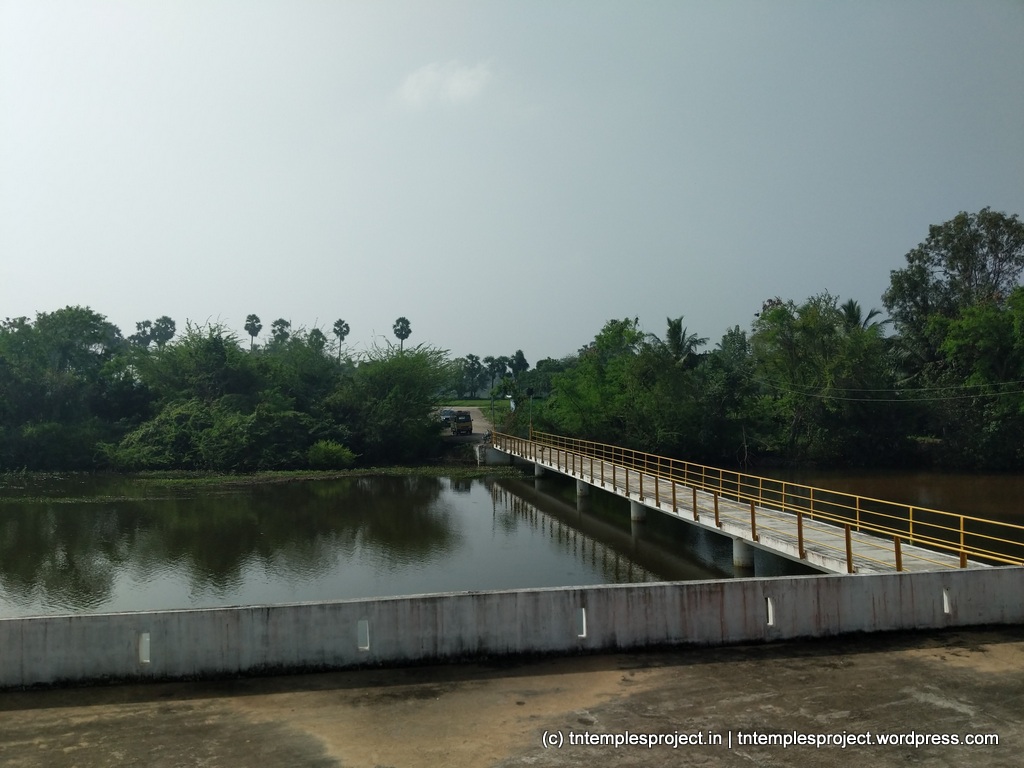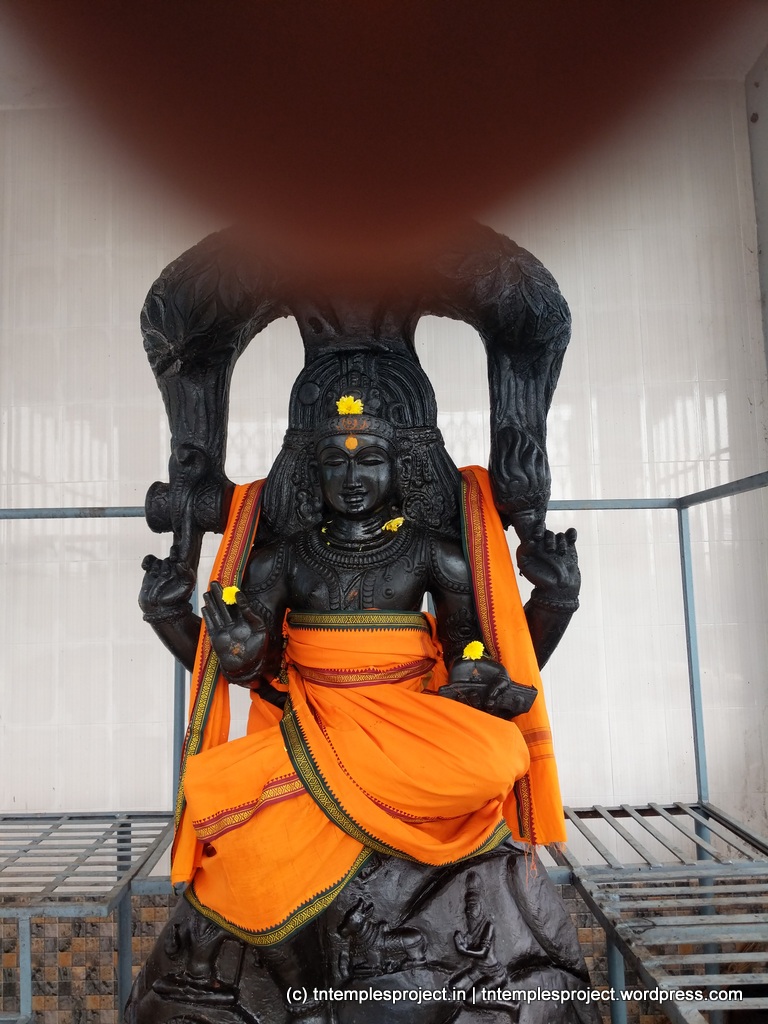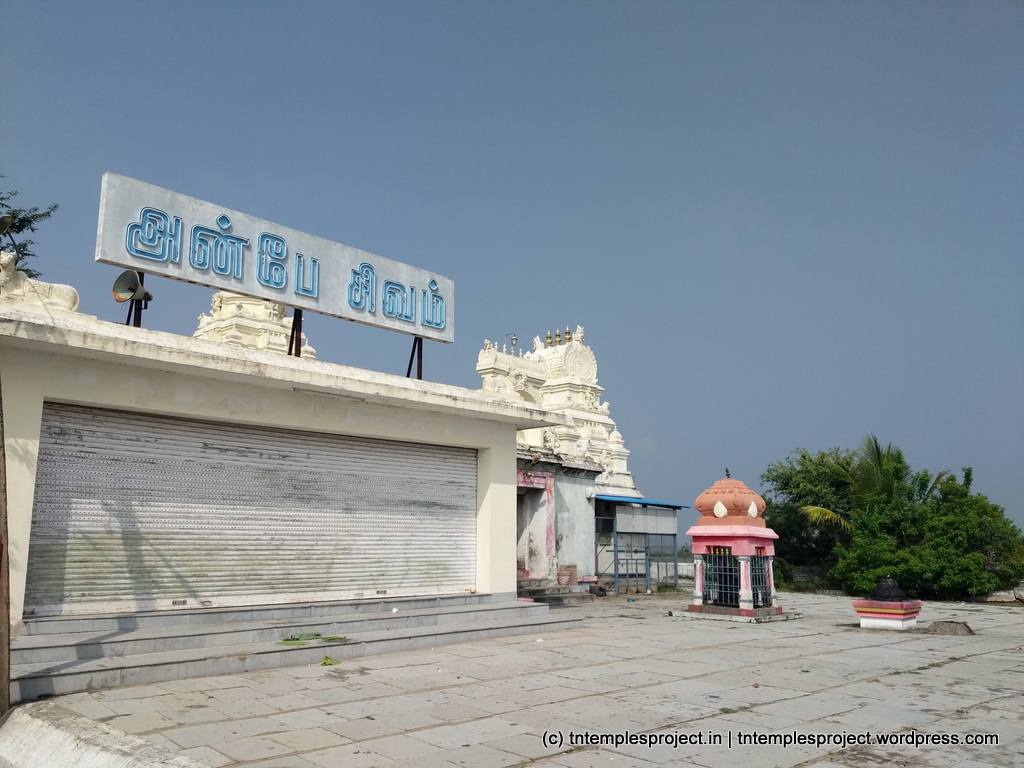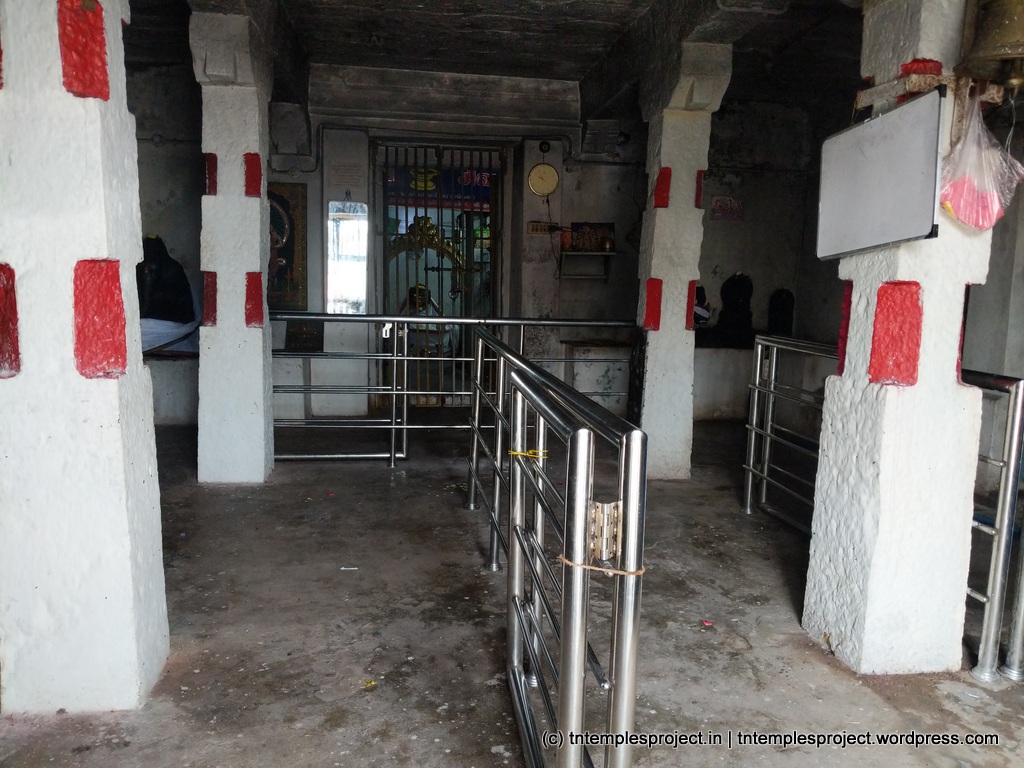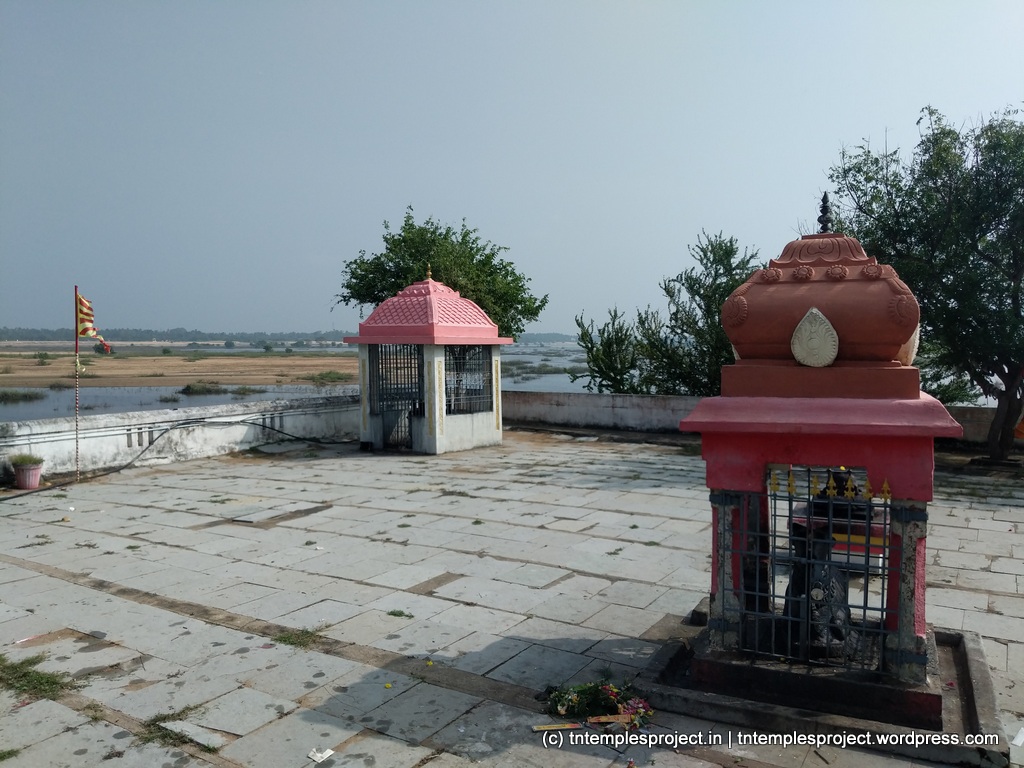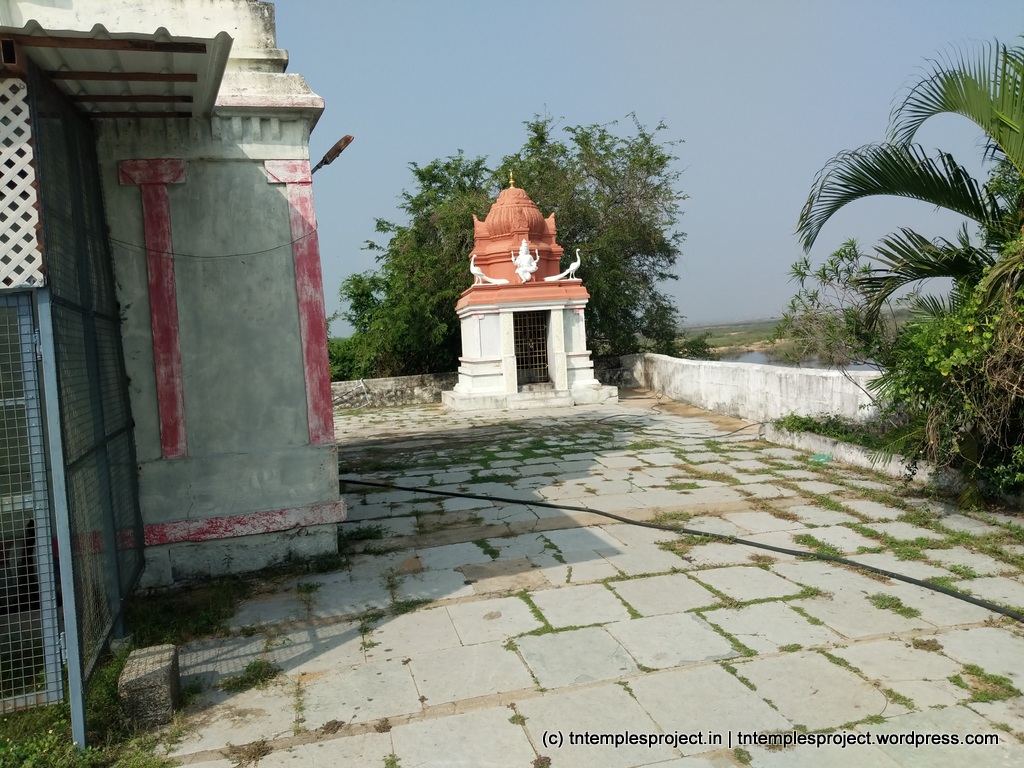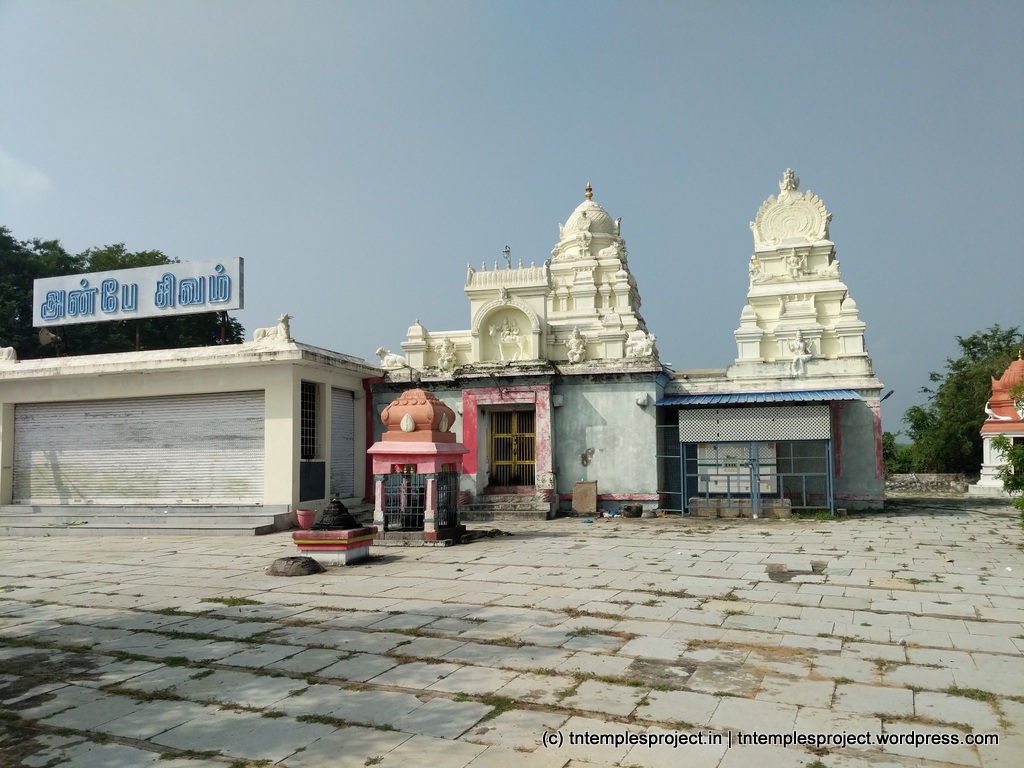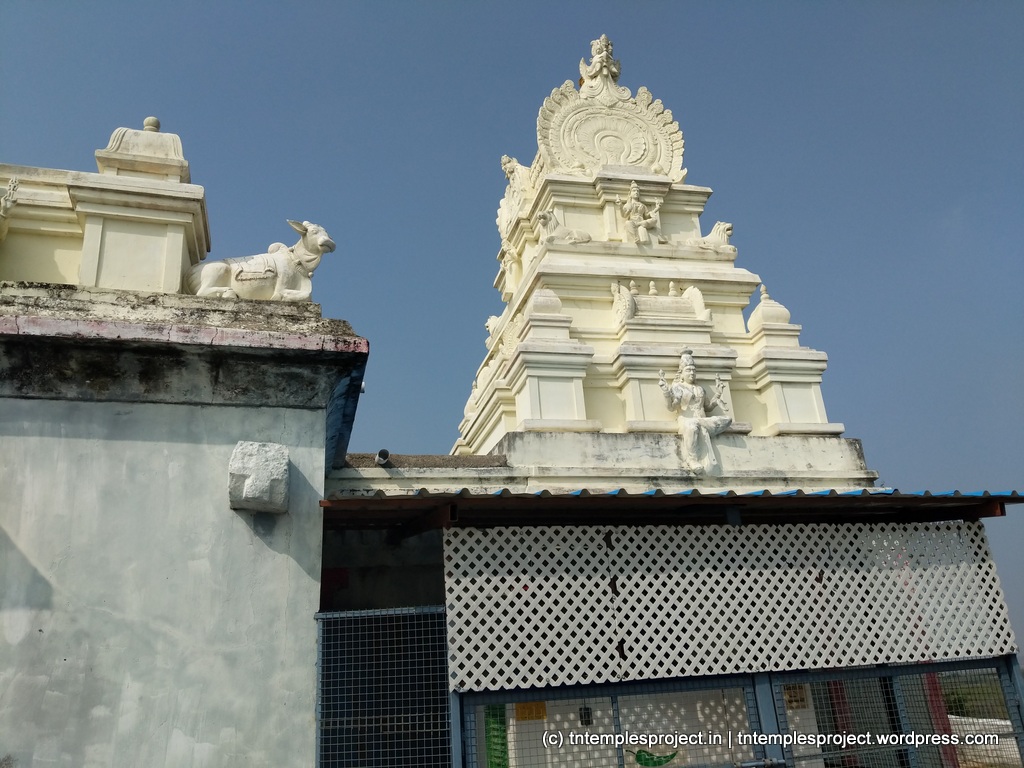Basic information about the temple
| Moolavar: | Kailasanathar | Ambal / Thayar: | Kanakambigai |
| Deity: | Siva | Historical name: | |
| Vriksham: | Teertham: | ||
| Agamam: | Age (years): | Timing: | 8.30 to 9 & 4.30 to 5 | Parikaram: |
| Temple group: | – | ||
| Sung by: | Temple set: | ||
| Navagraham: | Nakshatram: | ||
| City / town: | Parameswaramangalam | District: | Chengalpattu |
| Maps from (click): | Current location | Kanchipuram (73 km) | Chennai (85 km) |
| Tiruvallur (94 km) | Viluppuram (111 km) |
Location
Sthala puranam and temple information

Siva, as Shenbakeswarar (or Sanbakeswarar), came to this place and hid Himself on a small hillock near the Palar river. Parvati came here in search of Siva, and climbed the hillock on Her knees. Once they were reunited, they stayed here as Kailasanathar and Kanakambigai.
At the adjoining village of Ayapakkam are two Siva temples – one for Jambukeswarar and one for Shenbakeswarar (see sthala puranam above).
The Nandi of the Shenbakeswarar temple is seen facing this Kailasanathar temple, awaiting Siva’s arrival here.
This temple is constructed on what is today an island in the Palar river, which can get quite rough during floods. In olden times, it is possible that this was an extension or outcrop of land into the river, but the rough waters have carved an island here (there are huge boulders placed on the island’s banks, to protect it from the river waters). The temple can be reached via a walkway bridge, which leads straight up to a huge murti of Dakshinamurti.
The temple is well maintained, and a great place to visit. Because of much renovation here in recent times, a lot of the antiquity is, however, lost.
At the entrance to the garbhagriham, there is a lion pillar (which was a favourite motif of the Pallavas), as well as an inscription from the time of the Pallava king Nrupathunga. Based on his regnal years (869-880), this temple may be dated to the latter part of the 9th century, when this place was called Saileswaram.
The temple itself is fairly simple – the garbhagriham has a passage around it, and an ardha mandapam, with Vinayakar and Murugan guarding either side, and an Amman shrine facing south. It is believed that in its original form, there was no separate shrine for Amman in the temple. The Amman that is currently installed here is a recent addition.

There is also a sort of rock-like structure with about 10 indentations in it – these are believed to be the marks of Parvati’s knees, when She came looking for Siva here. There is also a carving depicting Siva as Kailasanathar, seated in meditation, with an umbrella over Him, and Kamadhenu pouring her milk over Him. In addition, sage Suka is said to have worshipped here.
Earlier, the south-facing Dakshinamurti at the end of the entry bridge, was open to air. It has been now, and the pathway organised in such a way that one has to first worship Dakshinamurti before proceeding to the rest of the temple.
The inscriptions at this temple are quite fascinating. One is about a brahmin lady who installed a murti of Vinayakar in a temple, and made an endowment of paddy and oil for lighting lamps for the temple. Another inscription deals with the community here agreeing to provide daily worship and offerings (neivedyam) at this temple, instead of interest on some gold they had received as loan from a person.
Other information for your visit
Because of its location, the temple is opened at 8.30 am for morning puja, and closed right after. Similarly, the temple is opened for evening puja at 4.30 pm and closed after the puja. It is advised to contact the priest directly if one is planning to visit at other times for any specific purpose.
Contact
Sambakeswara Sivacharyar: 97860 58325
Phone: 9789056615, 9786058325
Gallery

